
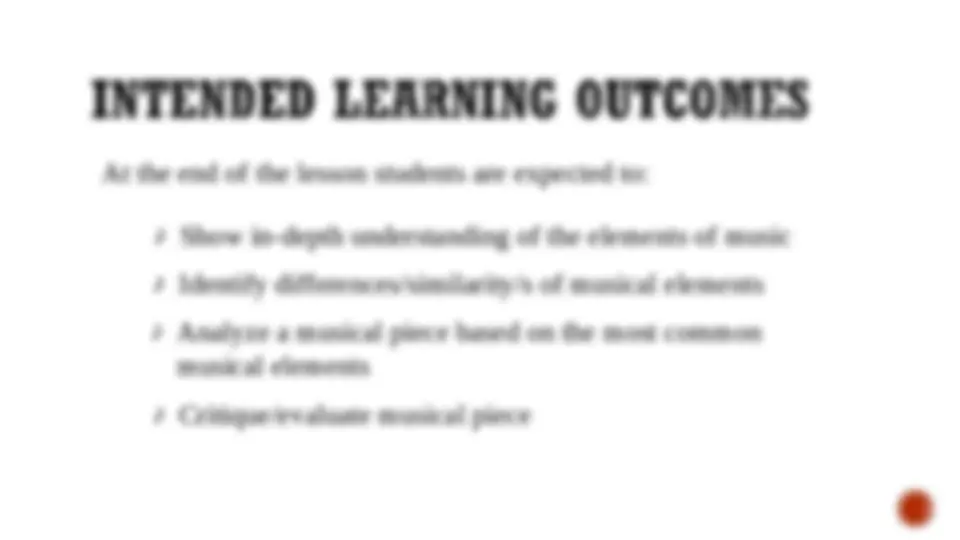
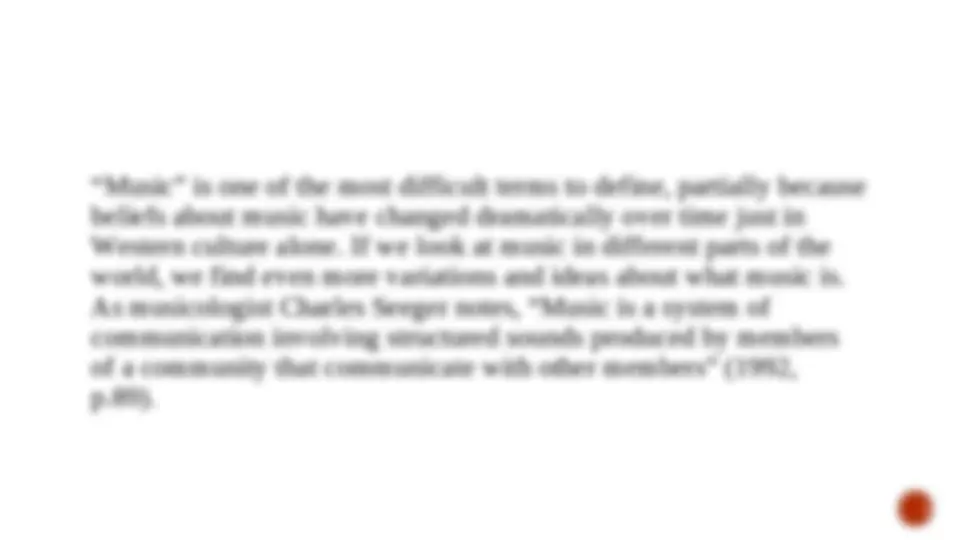
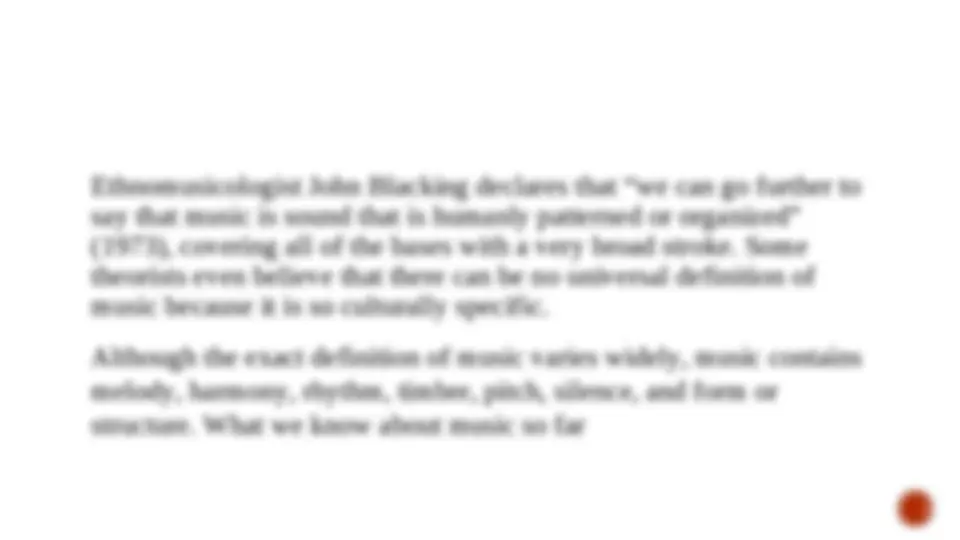
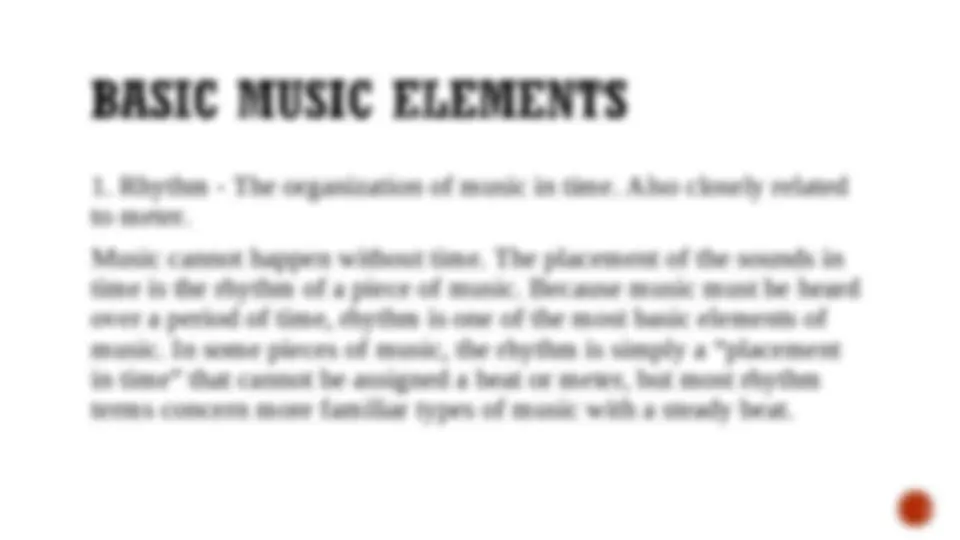
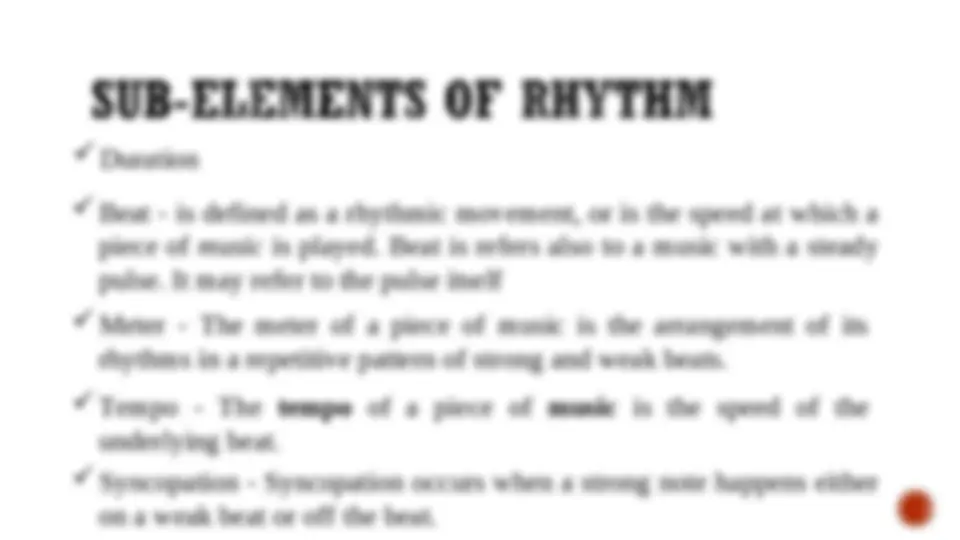
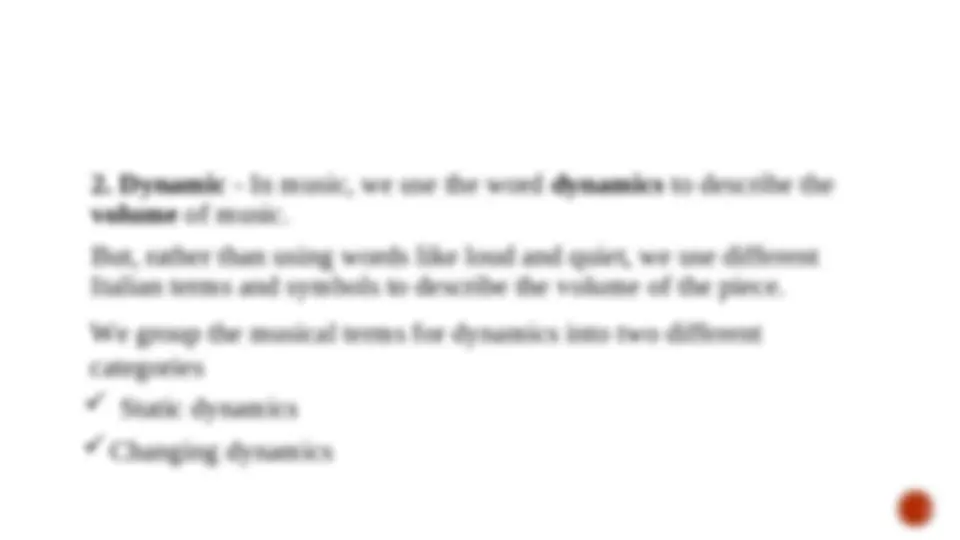
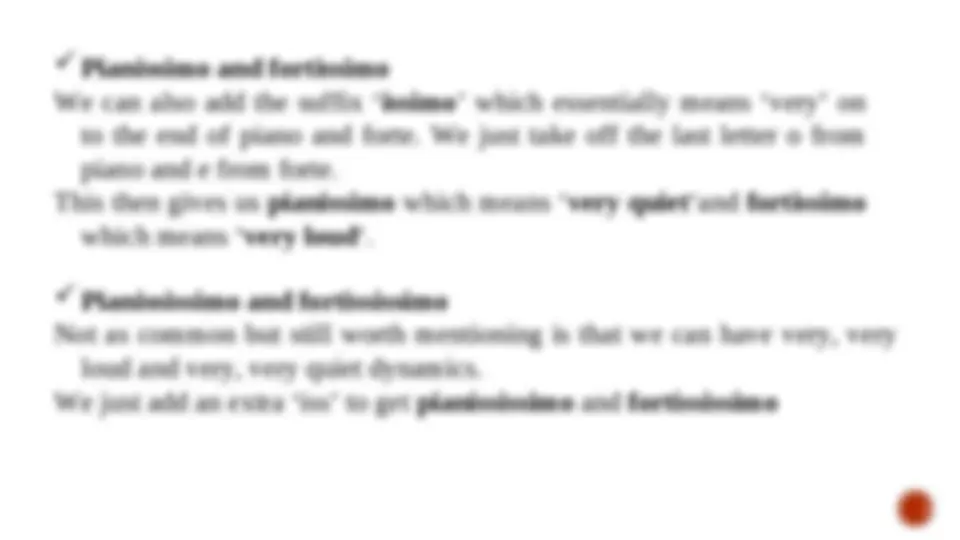
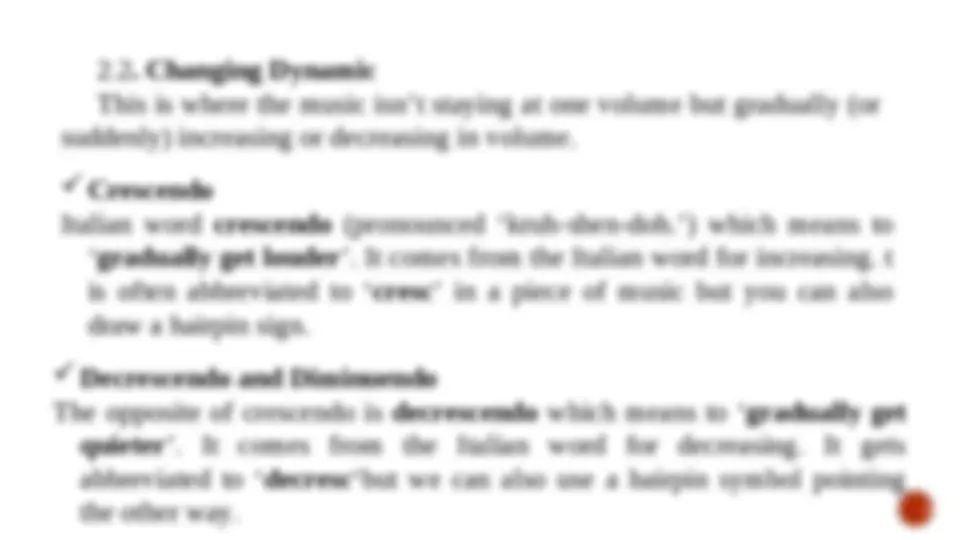
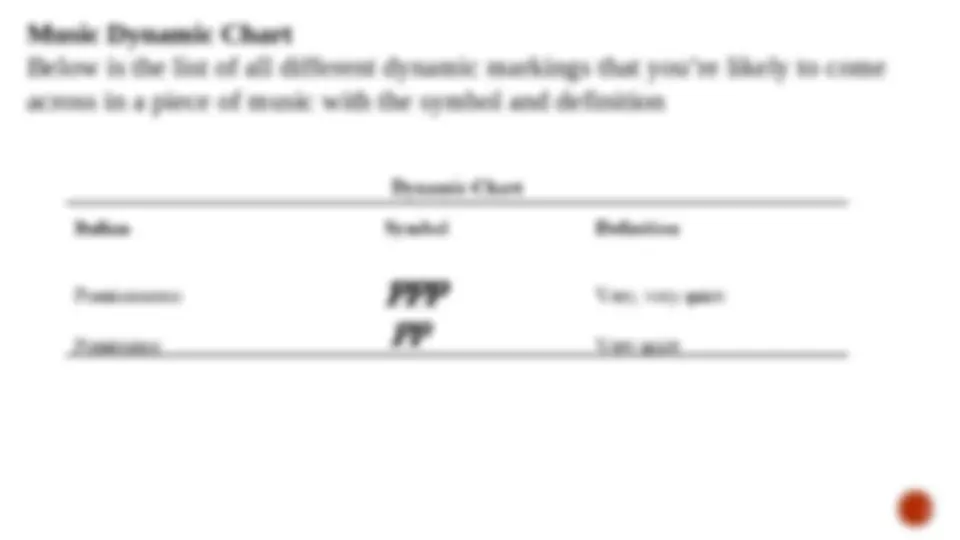
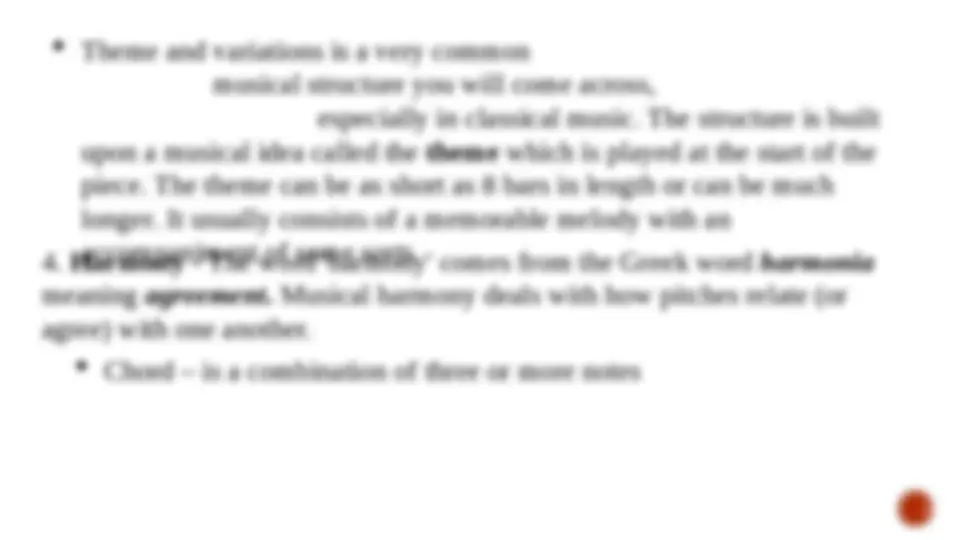
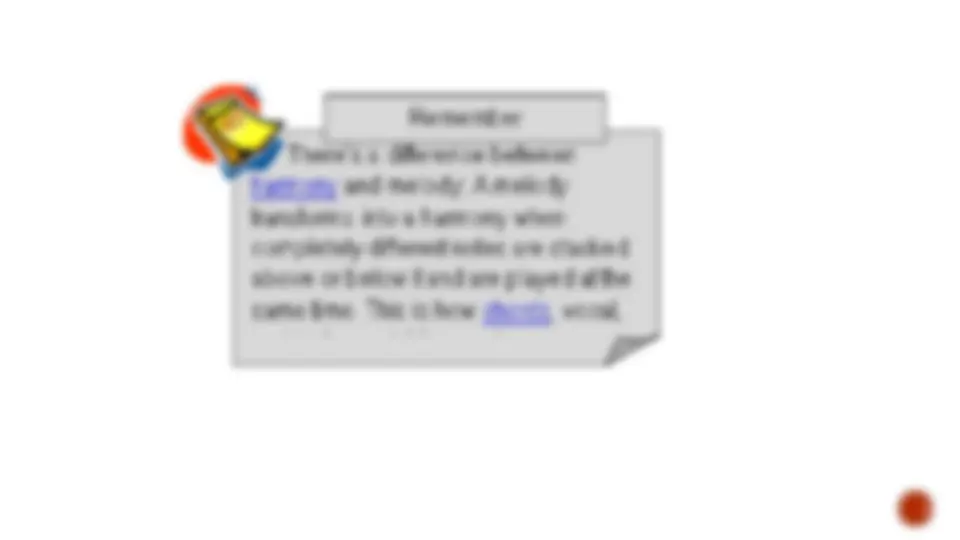
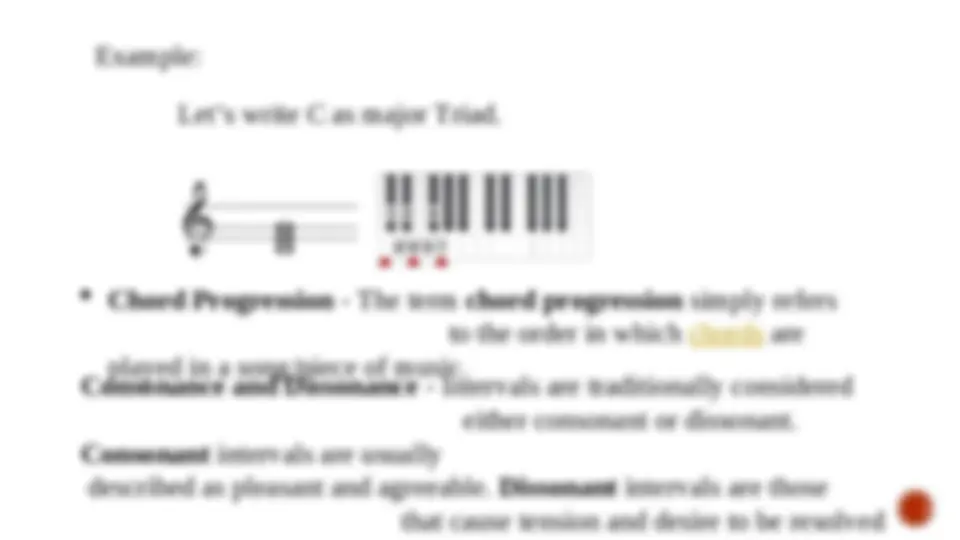
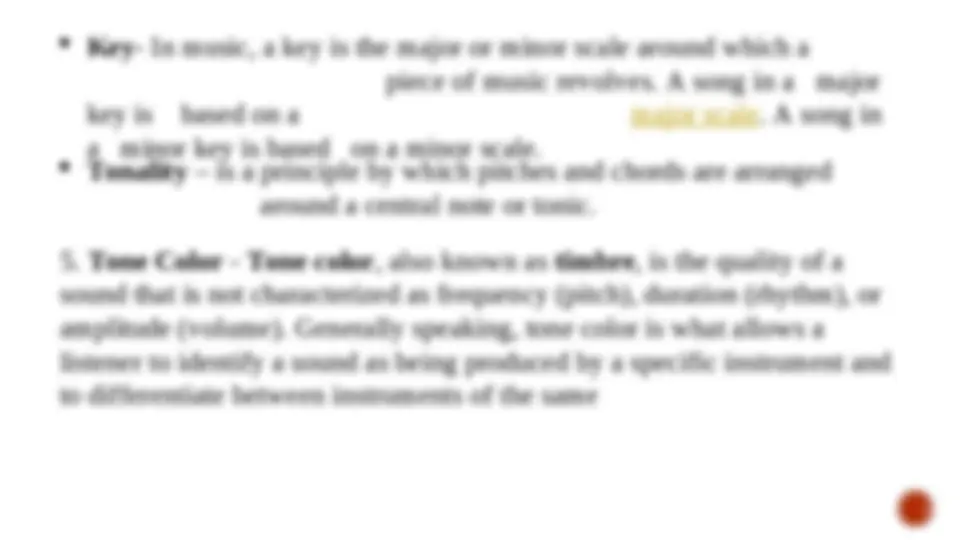
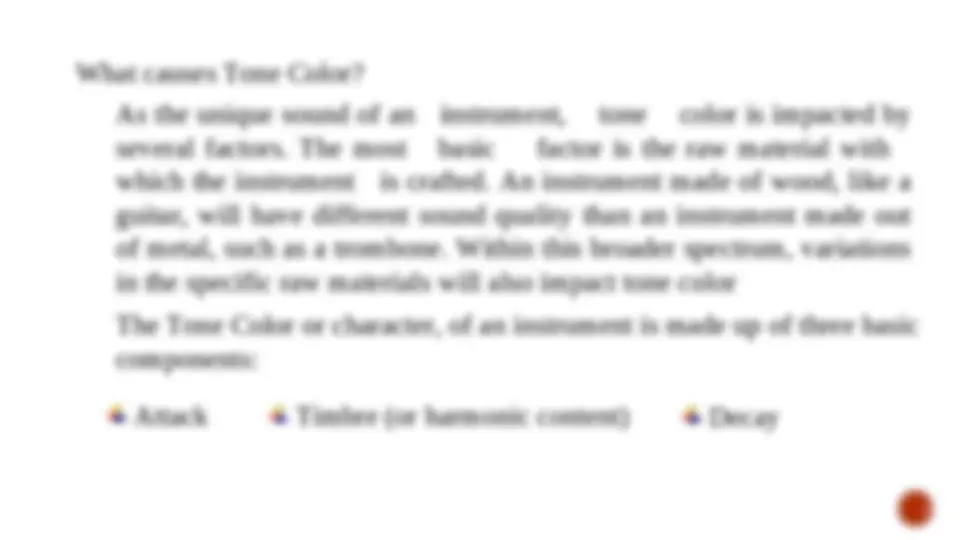
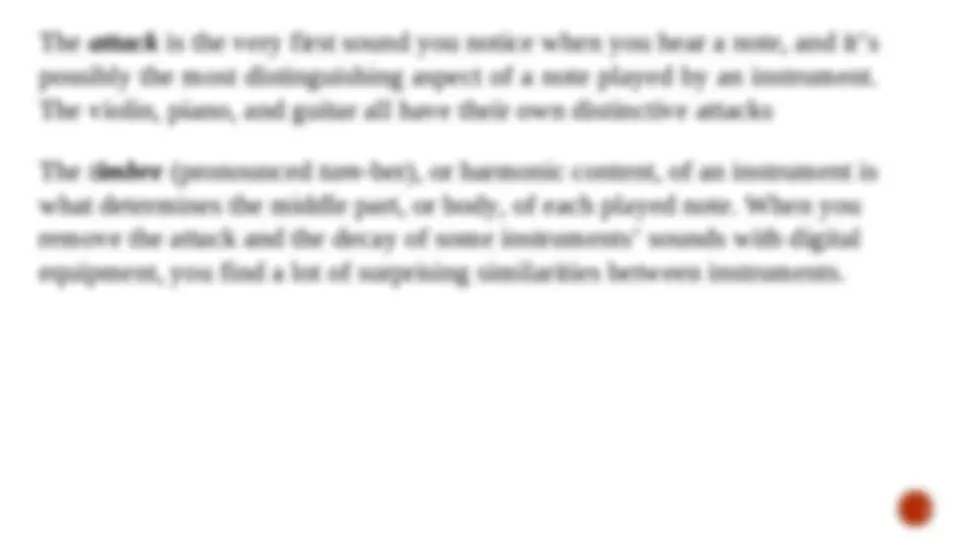
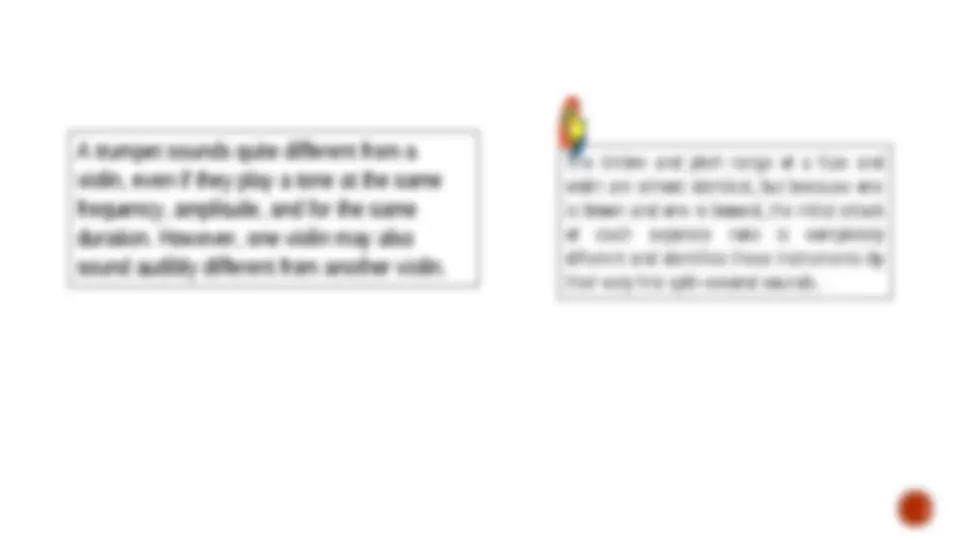
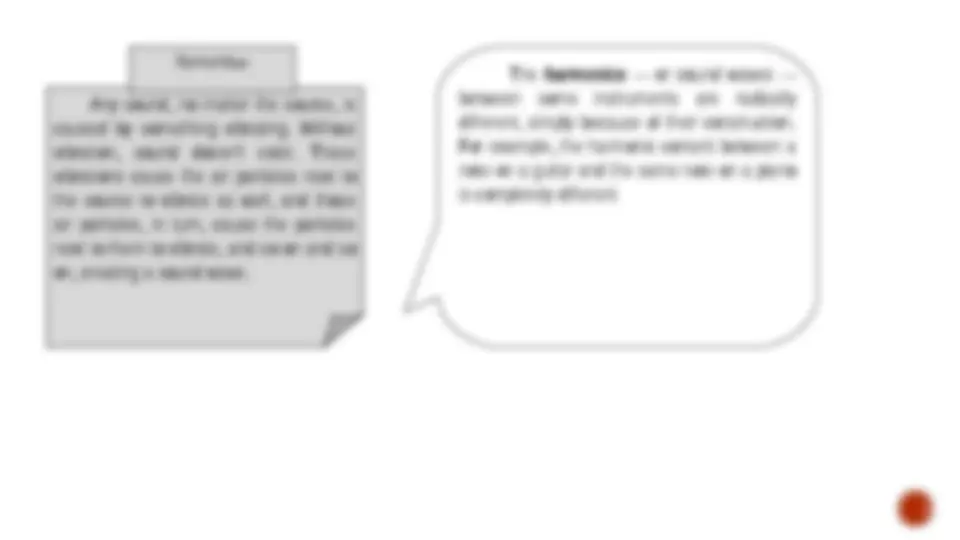
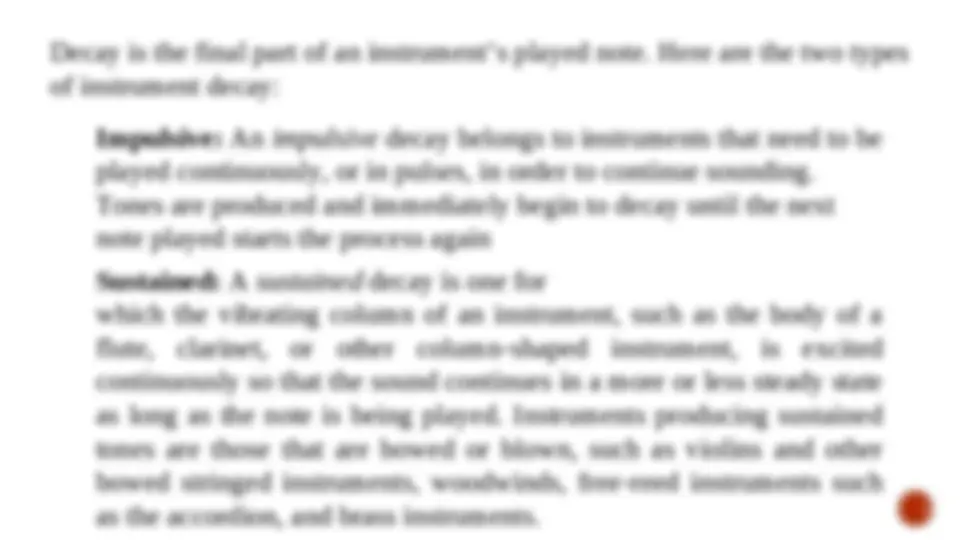
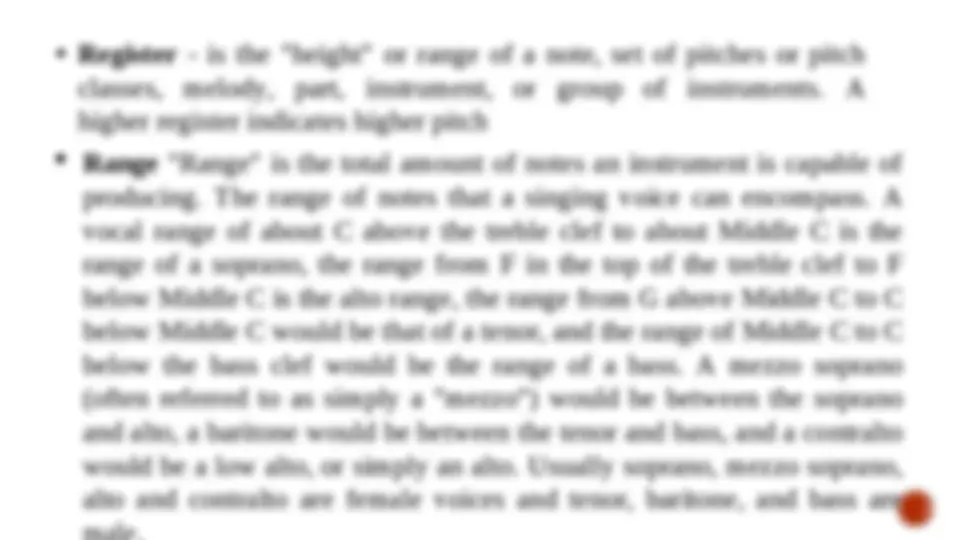
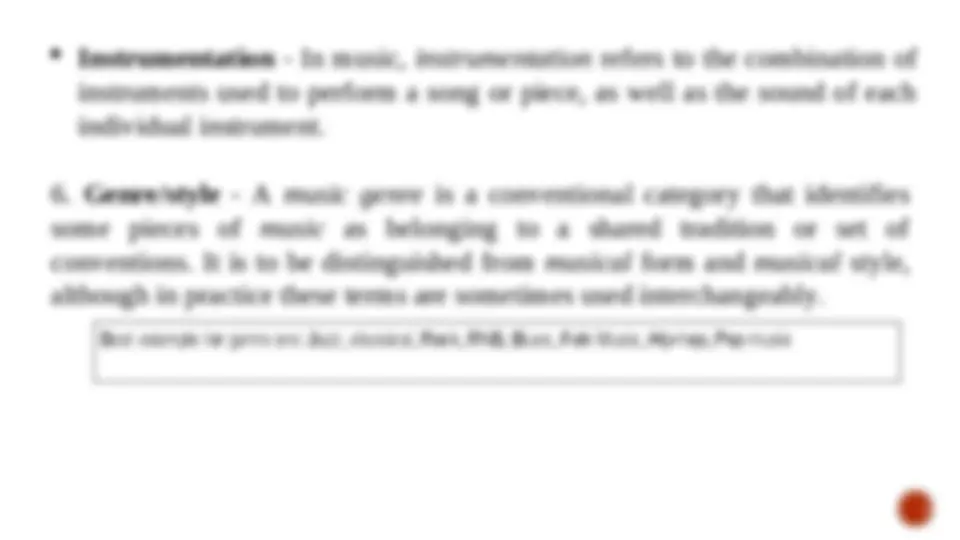


Study with the several resources on Docsity

Earn points by helping other students or get them with a premium plan


Prepare for your exams
Study with the several resources on Docsity

Earn points to download
Earn points by helping other students or get them with a premium plan
Community
Ask the community for help and clear up your study doubts
Discover the best universities in your country according to Docsity users
Free resources
Download our free guides on studying techniques, anxiety management strategies, and thesis advice from Docsity tutors
Covers the Elements of Music which plays a big role in music composition
Typology: Study notes
1 / 28

This page cannot be seen from the preview
Don't miss anything!





















Music evolved in numerous variations which sometimes defined by
the perspective of a person, however despite of these variations,
music dwells in common elements which generally make the
message more touching and meaningful. Continuing, in this module
you will learn the different Elements of music that probably new to
you. It helps you understand the world of music and perhaps you
would realized that waving your voice while singing is part of these
elements
“Music” is one of the most difficult terms to define, partially because
beliefs about music have changed dramatically over time just in
Western culture alone. If we look at music in different parts of the
world, we find even more variations and ideas about what music is.
As musicologist Charles Seeger notes, “Music is a system of
communication involving structured sounds produced by members
of a community that communicate with other members” (1992,
p.89).
Ethnomusicologist John Blacking declares that “we can go further to
say that music is sound that is humanly patterned or organized”
(1973), covering all of the bases with a very broad stroke. Some
theorists even believe that there can be no universal definition of
music because it is so culturally specific.
Although the exact definition of music varies widely, music contains
melody, harmony, rhythm, timbre, pitch, silence, and form or
structure. What we know about music so far
A working definition of music for our purposes might be as follows:
music is an intentionally organized art form whose medium is sound
and silence, with core elements of pitch (melody and harmony),
rhythm (meter, tempo, and articulation), dynamics, and the qualities
of timbre and texture.
to meter.
Music cannot happen without time. The placement of the sounds in
time is the rhythm of a piece of music. Because music must be heard
over a period of time, rhythm is one of the most basic elements of
music. In some pieces of music, the rhythm is simply a “placement
in time” that cannot be assigned a beat or meter, but most rhythm
terms concern more familiar types of music with a steady beat.
2. Dynamic - In music, we use the word dynamics to describe the
volume of music.
But, rather than using words like loud and quiet, we use different
Italian terms and symbols to describe the volume of the piece.
We group the musical terms for dynamics into two different
categories
Static dynamics
(^) Changing dynamics
2.1. Static Dynamic
Static dynamics are musical instructions that tell us to play the music at a
certain volume that doesn’t change.
We use three Italian terms to describe static dynamics:
Forte
Mezzo
(^) Piano
The first dynamic we’ll look at is piano , which is pronounced ‘pi-ah-no’.
Piano is the word we use to describe quiet or soft in music.
When reading music you’ll typically see a letter p which is telling the
musician to play this part of the piece quietly.
Pianissimo and fortissimo
We can also add the suffix ‘ issimo ’ which essentially means ‘very’ on
to the end of piano and forte. We just take off the last letter o from
piano and e from forte.
This then gives us pianissimo which means ‘ very quiet ‘and fortissimo
which means ‘ very loud ‘.
Pianississimo and fortississimo
Not as common but still worth mentioning is that we can have very, very
loud and very, very quiet dynamics.
We just add an extra ‘iss’ to get pianississimo and fortississimo
2.2. Changing Dynamic
This is where the music isn’t staying at one volume but gradually (or
suddenly) increasing or decreasing in volume.
(^) Crescendo
Italian word crescendo (pronounced ‘kruh-shen-doh.’) which means to
‘ gradually get louder ’. It comes from the Italian word for increasing. t
is often abbreviated to ‘ cresc ’ in a piece of music but you can also
draw a hairpin sign.
Decrescendo and Diminuendo
The opposite of crescendo is decrescendo which means to ‘ gradually get
quieter ’. It comes from the Italian word for decreasing. It gets
abbreviated to ‘ decresc ‘but we can also use a hairpin symbol pointing
the other way.
single entity. The melody of a song is the foreground to the backing
elements and is a combination of pitch and rhythm.
Melodies are produced through the human voice and any other instrument
that produces pitches––marimbas, flutes, synthesizers, glockenspiels,
guitars, etc
(^) Pitch - The words ‘frequency’ and ‘pitch ‘
are basically two words for the
same thing as far as sound is
concerned. They both
represent the concept of how high or how
low a note is. The only difference really
is that
frequency is more literal in a scientific
sense and ‘pitch’ is more
Example:
Let’s write C as major Triad.
Chord Progression - The term chord progression simply refers
to the order in which chords are
played in a song/piece of music.
Consonance and Dissonance - Intervals are traditionally considered
either consonant or dissonant.
Consonant intervals are usually
described as pleasant and agreeable. Dissonant intervals are those
that cause tension and desire to be resolved